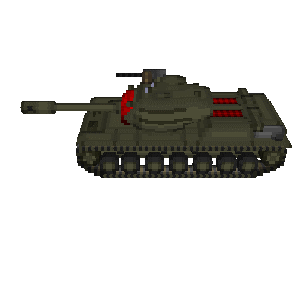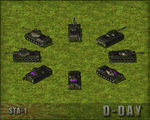Difference between revisions of "STA-1"
From D-day: wiki
| Line 24: | Line 24: | ||
==References== | ==References== | ||
*[http://tankguy.gooside.com/type61history/Type61History.html Tank Guys] | *[http://tankguy.gooside.com/type61history/Type61History.html Tank Guys] | ||
| + | }} | ||
| + | |||
| + | |||
| + | {{Timeframe | ||
| + | |||
| + | |totalwar=yes | ||
| + | |||
| + | |totalbc=yes | ||
| + | |||
}} | }} | ||
Revision as of 13:57, 12 August 2014
| ||||||||||||||||
History
To help with the rebuilding of Japan's armed forces in the beginning of 1950's America gave the JSDF 200 M4A3E8 Sherman tanks, however they were becoming obsolete so a replacement was soon needed. The Americans then offered them the M47 Patton, however it was too wide to be used on the Japanese rail network. The height of the average Japanese male was also a lot smaller than an American so many of the Japanese drivers found it hard to operate. Because of these problems it was decided to design a completely new indigenous tank to fit Japanese requirements. The STA-1 was the first prototype and featured an distinctive low turret ring and high engine deck. This helped keep the height of the tank as low as possible which was deemed important for the role of ambushing enemy tanks, however this restricted its ability to fire to the rear. At the same time work on simular design with a more standard layout was finished and built as the STA-2, this design was prefered and so development of the STA-1 was stopped.
References
. . . .
Time Frames
| 1930 - 1940: Pre-War |
1940 - 1942: Early-War |
1942 - 1944: Mid-War |
1944 - 1945: Late-War |
1945 - 1960: Post-War |
1930 - 1960: Total-War |
|
| Buildable | Yes | |||||
| Bonus Crate | Yes |
. . . .

